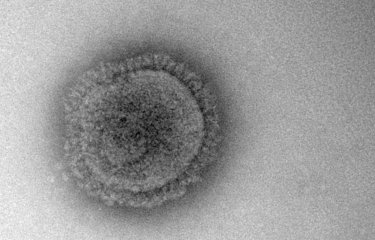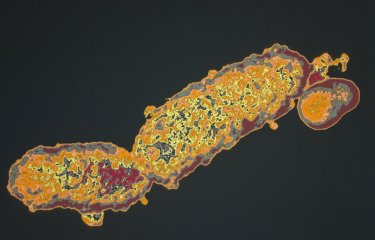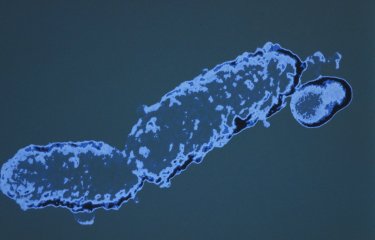In a recent study stemming from an international partnership involving several Institut Pasteur scientists, work was carried out on modeling the spatial dynamics and evolution of Bordetella pertussis, the bacterium responsible for whooping cough.
How do we track the dynamics of a disease, particularly in terms of its response to vaccines? A study published in Science Translational Medicine provides key data on the transmission and dynamics of Bordetella pertussis, the agent that causes whooping cough. It marks the culmination of 5 years' genomic data collection. Besides addressing this specific pathogen, the research has also offered some methodological developments based on mathematical modeling. These tools represent a significant breakthrough in the use of pathogens' genetic data to describe their spatial dynamics. The scientists also examined the vaccine-induced fitness changes of the pathogen's various genotypes.
Whooping cough is a highly contagious respiratory infection mainly caused by the airborne bacterium B. pertussis. In regions not operating a child vaccination program, the disease essentially spreads among children, whereas in countries like France, where such a program has been in place for several decades, it is now transmitted from adults or adolescents to infants. Since whooping cough does not confer lifelong immunity, it is possible to contract the disease more than once. Although vaccines are available, there have been resurgences of the disease in several regions of the world.
A large-scale trial enabled by differences in vaccine strategies
The role of immunity among human populations in the evolution of circulating pathogens is a fundamental issue in infectious disease ecology which is rarely studied in a non-laboratory setting. Such research requires precise genetic data on circulating pathogens and details of disruptions to local immunity caused by events such as vaccination campaigns. This is precisely the opportunity presented by B. pertussis, since a highly diverse range of vaccination campaigns have been conducted worldwide involving different vaccine types and different timescales. In recent decades, high-income countries have been using acellular vaccines with radically different immunogenic profiles to inactivated bacterial vaccines used in other countries. As a result of this situation, it is possible to test the impact of vaccine-induced changes in immune pressure in unique contexts.
"This study has been made possible by a new consortium of national reference laboratories in 12 European countries," comments Sylvain Brisse, Head of the National Reference Center (CNR) for Whooping Cough (in French) at the Institut Pasteur. This has enabled analysis of data from over 3,000 genomes from 23 countries worldwide, covering a period of 85 years. Using this data set, it is possible to characterize the way in which B. pertussis spreads within and between countries. "By combining information on the place and time of infection and the genetic sequence of the infecting bacterium, we have been able to determine the speed at which whooping cough spreads within a country, between countries, and through continents," explains Henrik Salje from the University of Cambridge. The scientists revealed that over 95% of cases detected within a community originate from different transmission chains, suggesting that asymptomatic transmission plays a key role. This is also the first study to estimate the speed at which B. pertussis lineages spread geographically. For example, the authors estimate that it took 5 to 10 years for the European strains to be evenly distributed.
Assessing how various strains have adapted to vaccination
The scientists also developed an analytical framework for assessing the fitness of the pathogen's various genotypes, in other words their ability to adapt to the different vaccines used. One of the key study outcomes was to quantify the fitness of a subset of genotypes. The scientists specifically studied strains deficient in pertactin, a protein enabling adhesion of the bacterium to cells, thus allowing effective infection of the host. "Although these genotypes' fitness is normally low, the implementation of acellular vaccines targeting components such as pertactin confers an advantage," explains Valérie Bouchez, a research engineer at the Institut Pasteur. This finding is of significant interest to the scientific community.
"In addition to results obtained for B. pertussis, this methodological approach could also help us study the transmission of other infectious diseases," explains Noémie Lefrancq from the University of Cambridge. This publication highlights just how important international collaborations are to understanding the spread of infectious diseases, and also demonstrates the potential of phylogeographic methods for studying pathogen evolution. Moreover, this study provides findings that are relevant to the vaccination strategy for whooping cough, a disease that currently affects over 24 million people per year. Its cross-cutting approach sheds light on pathogen spread and the evolutionary pressure of vaccines, a particularly topical issue given the COVID-19 pandemic.
Source:
Global spatial dynamics and vaccine-induced fitness changes of Bordetella pertussis, Science Translational Medicine, April 27, 2022
Noémie Lefrancq1,2, Valérie Bouchez3,4, Nadia Fernandes3, Alex-Mikael Barkoff5, Thijs Bosch6, Tine Dalby7, Thomas Åkerlund8, Jessica Darenberg8, Katerina Fabianova9, Didrik F. Vestrheim10, Norman K. Fry11,12, Juan José González-López13, Karolina Gullsby15, Adele Habington16, Qiushui He5,17, David Litt11, Helena Martini18, Denis Piérard18, Paola Stefanelli19, Marc Stegger7, Jana Zavadilova20, Nathalie Armatys3,4, Annie Landier3,4, Sophie Guillot3,4, Samuel L. Hong21, Philippe Lemey21, Julian Parkhill22, Julie Toubiana3,4,23, Simon Cauchemez1, Henrik Salje1,2, Sylvain Brisse3,4
1 - Institut Pasteur, Mathematical Modelling of Infectious Diseases Unit, UMR2000, CNRS, France
2 - Department of Genetics, University of Cambridge, Cambridge, UK
3 - Institut Pasteur, Biodiversity and Epidemiology of Bacterial Pathogens, Paris, France
4 - National Reference Center for Whooping Cough and Other Bordetella Infections, Paris, France
5 - University of Turku UTU, Institute of Biomedicine, Research Center for Infections and Immunity, Turku, Finland
6 - Centre for Infectious Disease Control, National Institute for Public Health and the Environment (RIVM), Bilthoven, The Netherlands
7 - Statens Serum Institut, Bacteria, Parasites and Fungi / Infectious Disease Preparedness, Copenhagen, Denmark
8 - The Public Health Agency of Sweden, Unit for laboratory surveillance of bacterial pathogens, Solna, Sweden
9 - National Institute of Public Health, Department of Infectious Diseases Epidemiology, Prague, Czech Republic
10 - Norwegian Institute of Public Health, Department of Infectious Disease Control and Vaccine, Oslo, Norway
11 - Respiratory and Vaccine Preventable Bacteria Reference Unit, Public Health England – National Infection Service, London, UK
12 - Immunisation and Countermeasures Division, Public Health England – National Infection Service, London, UK
13 - University Hospital Vall d'Hebron, Microbiology Department, Barcelona, Spain
14 - Universitat Autònoma de Barcelona,Department of Genetics and Microbiology, Barcelona, Spain
15 - Centre for Research and Development, Uppsala University/Region Gävleborg, Gävle, Sweden
16 - Molecular Microbiology Laboratory, Children’s Health Ireland, Crumlin, Ireland
17 - InFLAMES Research Flagship Center, University of Turku, Turku, Finland
18 - Department of Microbiology, National Reference Centre for Bordetella pertussis, Universitair Ziekenhuis Brussel, Vrije Universiteit Brussel (VUB), Brussels, Belgium
19 - Department of Infectious Diseases, Istituto Superiore di Sanità, Rome, Italy
20 - National Institute of Public Health, National Reference Laboratory for Pertussis and Diphtheria, Prague, Czech Republic
21 - Department of Microbiology, Immunology and Transplantation, Rega Institute, KU Leuven, Leuven, Belgium
22 - Department of Veterinary Medicine, University of Cambridge, Cambridge, UK
23 - Université de Paris, Department of general paediatrics and paediatric infectious diseases, Paris, France





